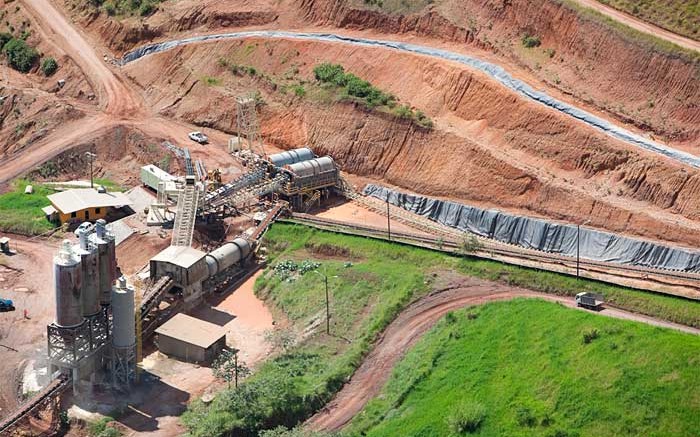Aura Minerals’ (TSX: ORA) move to cut costs across its mines has contributed to promising third-quarter results, but the company still has operating and financing hurdles to clear before it can receive better market recognition, says CIBC analyst Tom Meyer.
The Toronto-based producer posted a third-quarter loss of US$1.8 million compared to a loss of US$16.9 million a year ago. The recent quarterly loss included a US$8.8 million one-time loss as it disposed of two of its non-core Brazilian exploration properties. Once adjusted, earnings per share were US1¢, above the consensus of negative US5¢.
Aura —which operates the San Andres gold mine in Honduras, the Aranzazu copper-gold-silver mine in Mexico, and the high-cost nearly depleted Sao Francisco and Sao Vicente gold mines in Brazil— reported record gold production and cash costs in the quarter. Gold production totaled 55,611 oz., up 29% from the third quarter of 2012, while cash costs dropped 22% to US$916 per oz.
The miner sold 56,849 oz. gold at an average realized price of US$1,323 per oz. compared to 39,499 oz. gold sold at US$1,643 per oz. in the year earlier.
Copper production at Aranzazu grew 54% to 3.7 million lb., while on-site average cash cost per lb. were US$3.52 per lb., net of gold and silver credits, compared to US$4.48 a year ago.
Net sales revenues in the third quarter climbed US$13.2 million to US$86 million, while operating cash flow jumped US$4.1 million to US$22.1 million over the year.
The company’s CEO Jim Bannantine said the higher gold and copper production as well as significantly lower arsenic content in Aranzazu’s copper concentrate “has resulted in the company continuing to generate cash flow from operations and yielded a trailing twelve month operating cash flow of US$62.6 million.”
“We view the shares as inexpensive; however, operating challenges at the Brazilian gold mines and the arsenic issue at Aranzazu have limited the company’s ability to grow the cash flow needed to fund the Aranzazu expansion and the development of the Serrote project,” Meyer outlined in his investment thesis.
That said, he notes the company has improved quarterly cash costs at its two nearly depleted mines in Brazil and taken steps to reduce arsenic levels at the Aranzazu mine. Year-on-year cash costs per oz. dropped 19% at Sao Francisco and 60% at the heap-leach Sao Vicente mine to US$903 and US$809, respectively.
Aura says mining at the Sao Francisco should continue until 2014 end, while at Sao Vicente should wrap up in early 2014. The producer adds it’s looking at several ways to “maximize the disposal and closure value of the assets of the Brazilian mines,” including selling the plant and equipment.
At Aranzazu, average arsenic levels in the copper concentrate have dropped to 0.98% from 1.05% in the previous quarter likely due to ore blending. These levels should further improve with the installation of the roaster, expected to come on-stream in the third quarter of 2014. However, the estimated US$33-million roaster and the $80-million mill expansion to 4,500 tonnes per day from 2,600 tonnes is currently on hold pending financing, wrote Meyer.
While it is assessing funding options, Aura has negotiated to extend the forbearance period of its current credit facility to the end of November. Rory Taylor, the company’s CFO, noted on a conference call he believes that could be further extended.
At the copper-gold-iron Serrote project in Brazil, Bannantine added the company is discussing project financing with interested parties, including selling a majority interest in the project.
On a positive note, Aura expects to exceed its 2013 gold production forecast of 166,000–185,000 oz. at cash costs of US$1,050–$1,200 per oz., while meeting its copper guidance of 13–15 million lb. copper at average cash costs of US$3–$3.50 per lb.
Aura closed the September quarter with US$21 million in cash.
Meyer has a 20¢ target and sector performer rating on the stock.


Be the first to comment on "Aura improves ops, but seeks more funds"